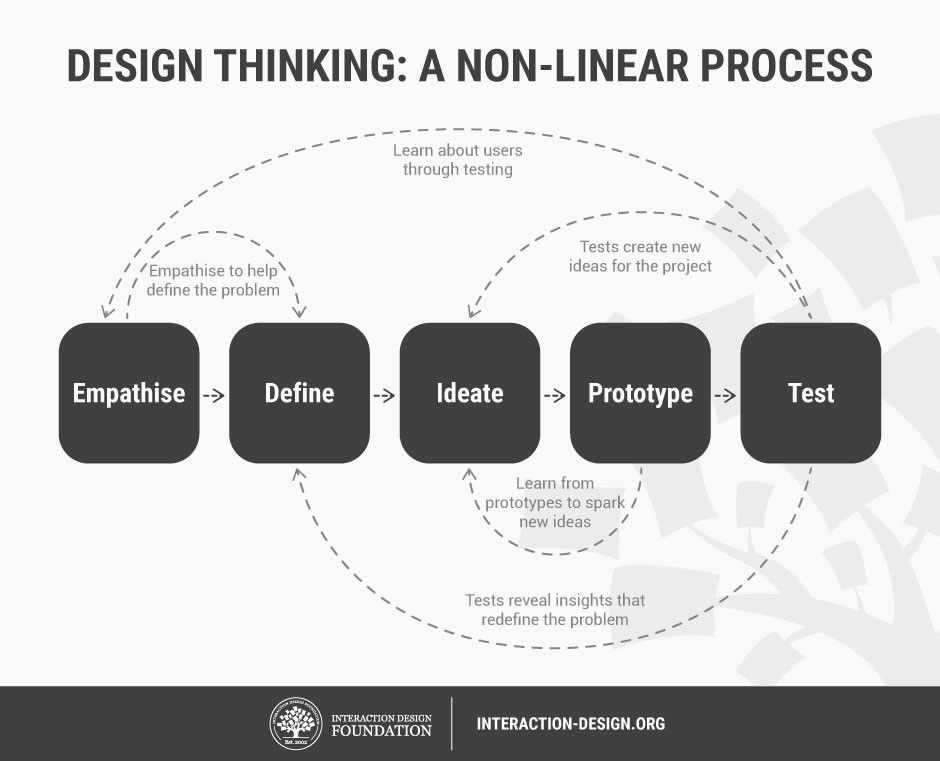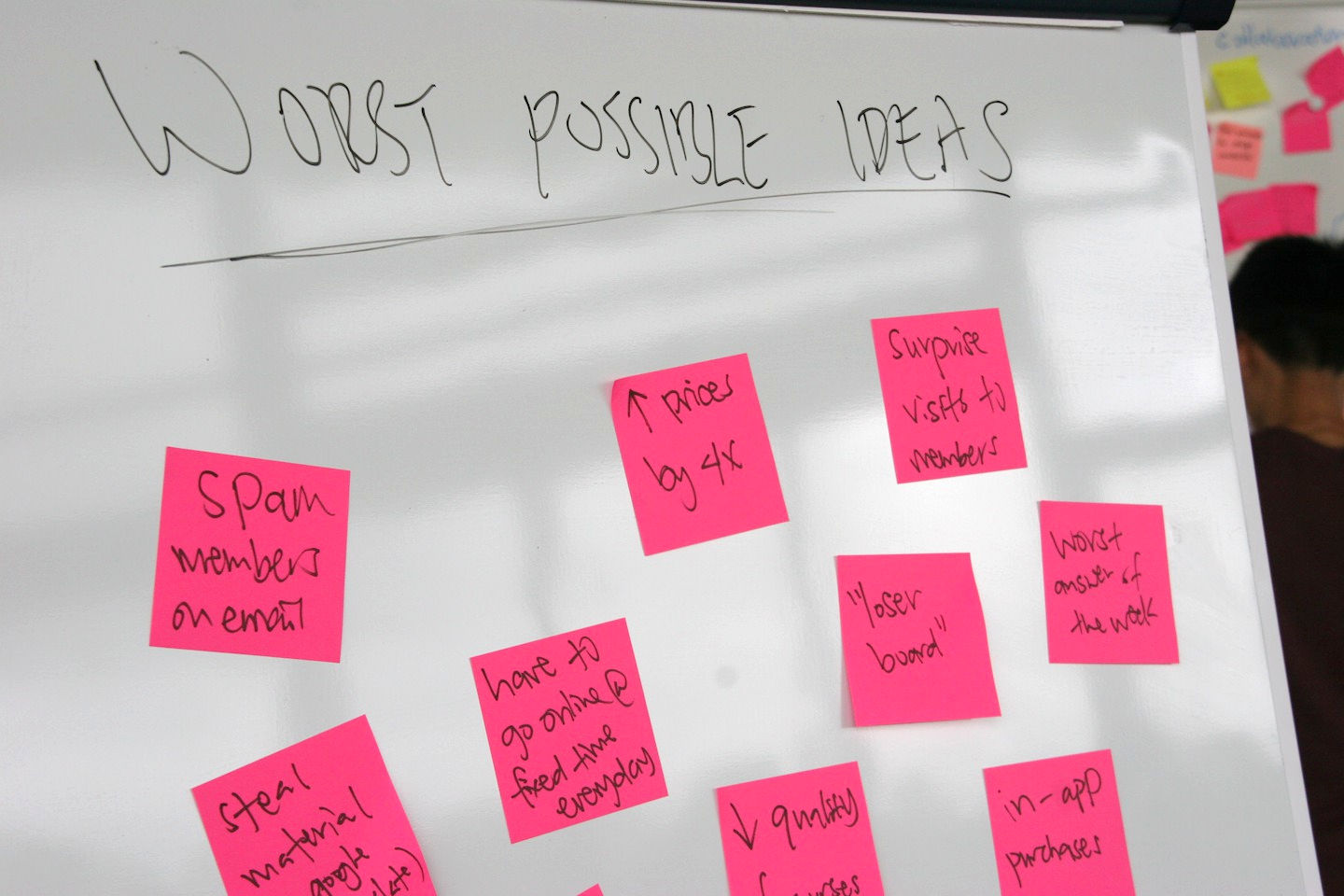What is Design Thinking?
Design Thinking is a process. It is flexible, iterative, and focuses on collaboration between designers and users. The goal of Design Thinking is to create solutions by using a human-centered approach to complex problems based on how people think, feel, and behave.
Where it all Began

The Sciences of the Artificial
Nobel Prize laureate Herbert Simon outlined the first model of Design Thinking in his 1969 text, "The Sciences of the Artificial" (MIT Press, 1969). He defined "design" as the "transformation of existing conditions into preferred ones" (p.55). Simon writes that Design Thinking is a creative process based around the 'building up' of ideas, rather than the 'breaking down' of ideas associated with critical thinking.
What are the Steps?
Design Thinking is less about the object you're designing but more about the thinking behind it. The process is designed to be a semi-structured protocol for solving problems and discovering new opportunities.

Author/Copyright holder: Interaction Design Foundation. Copyright licence: CC BY-NC-SA 3.0
It is important to know that although there is a structure in place for the Design Thinking process, the path is often non-linear. Many steps require looping, redesigning, relearning, and retesting. A structure for non-judgemental and free-flowing thinking may seem counter intuitive, but structure can be one of the key elements to enhancing creativity in problem solving.
1. Empathise
The first step in the Design Thinking process is Empathise. Empathy is crucial to human-centered design and allows people to set aside assumptions and judgement in order to gain insight into users and their needs. In this step, substantial information is gathered by observation and involvement in the process, product, or experience. Empathy will help define the problem or opportunity.
2. Define
By analyzing your observations you can then define the core problems or opportunities. Cross-examine each problem with various perspectives and create a problem statement using a human-centered approach.
Fill in a problem statement or need:
AS A user type I NEED/WANT user need SO THAT user goal.
situation IS CHALLENGING FOR user type BECAUSE cause/problem.
After creating a problem statement, look for solutions by asking "How Might We".
Fill in a How Might We statement:
HOW MIGHT WE _action FOR stakeholder IN ORDER TO change something .
3. Ideate

Worst Possible Idea
During this stage, teamwork is necessary to create solutions and new ideas. Ideate is the fun part! Free thinking and judgement-free zones are encouraged while using ideation techniques. Ideation techniques to create ideas can include brainstorming, brainwriting, and worst possible idea.
4. Prototype
After you've picked an idea or solution to fulfil, it's time to experiment! Experimentation plays a key role in this step. Mistakes will be made and new ideas will be realised. Producing a number of inexpensive, scaled down versions of your idea, process, model, etc. is important to find the constraints or problems with your ideas. Prototypes can speed of the process of problem solving. At this point, you will learn from your prototypes, spark new ideas, and may need to go back to the ideate phase.
5. Test
Once you've gone through all of the stages of the Design Thinking process and have been successful (looping or otherwise), you will land at the last stage, testing. Do not confuse this for the last stage in your product lifecycle, but your Design Thinking process. At this time, designers and stakeholders will rigorously test the completed prototype. The results generated during this phase are often used to redefine problems and inform the understanding of the users. Alterations and refinements are made and hopefully your design process will be completed!
Real Example
To illustrate the Design Thinking process from start to finish, here is a video I created in partnership with MIT Sloan School. In this video, students were separated into two groups and tasked with a problem: creating a bridge made entirely from tape and cardboard. They had two days from start to finish to create the bridge, which had to hold the weight of a golf cart. You can see the whole Design Thinking process here:
https://vimeo.com/128929261?embedded=true&source=video_title&owner=9892643
Design Thinking is an approach to innovation and isn’t a formal step-by-step process; It is a framework and a mind-set. The core idea is deeply understanding the goals and needs of a product and refining ideas through prototypes. Throughout the video, two different designs were created for the same goal, and both passed the golf cart test.
